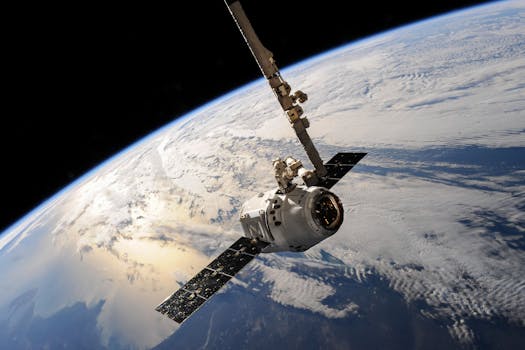
MEO Satellites: Revolutionizing Global Communication with Medium Earth Orbit Technology
MEO satellites, or Medium Earth Orbit satellites, are a type of satellite that orbits the Earth at an altitude of around 2,000 to 36,000 kilometers. This orbit is lower than the geostationary orbit used by many communications satellites, but higher than the low Earth orbit used by satellites such as the International Space Station. MEO satellites are designed to provide a range of benefits, including faster and more reliable communication services, improved navigation, and enhanced Earth observation capabilities.
The use of MEO satellites is becoming increasingly popular, particularly for applications such as satellite communication, navigation, and Earth observation. One of the main advantages of MEO satellites is their ability to provide a higher level of service than traditional geostationary satellites, while also offering a more cost-effective solution than low Earth orbit satellites. This is because MEO satellites can provide a higher gain antenna, which allows for a stronger signal and better communication services.
Applications of MEO Satellites
MEO satellites have a range of applications, including satellite communication, navigation, and Earth observation. In terms of communication, MEO satellites can be used to provide a range of services, including broadband internet, voice and data communication, and broadcasting. They can also be used to provide navigation services, such as GPS and other satellite-based navigation systems. Additionally, MEO satellites can be used for Earth observation, providing high-resolution images of the Earth’s surface and monitoring environmental changes.
One of the most significant applications of MEO satellites is in the provision of satellite communication services. MEO satellites can be used to provide broadband internet services to remote and underserved communities, as well as to provide backup communication services in the event of a disaster or outage. They can also be used to provide communication services for maritime and aeronautical applications, such as ship and aircraft tracking.
Benefits of MEO Satellites
MEO satellites offer a range of benefits, including faster and more reliable communication services, improved navigation, and enhanced Earth observation capabilities. They can also provide a more cost-effective solution than traditional geostationary satellites, while also offering a higher level of service. Additionally, MEO satellites can provide a higher level of security, as they are less susceptible to interference and jamming than traditional geostationary satellites.
In terms of navigation, MEO satellites can provide a more accurate and reliable service than traditional GPS systems. This is because MEO satellites can provide a stronger signal and better geometry, which allows for more accurate positioning and navigation. This makes MEO satellites ideal for applications such as aviation, maritime, and land transportation, where accurate navigation is critical.
Challenges and Limitations of MEO Satellites
While MEO satellites offer a range of benefits, there are also several challenges and limitations that need to be considered. One of the main challenges is the cost of launching and operating MEO satellites, which can be higher than traditional geostationary satellites. Additionally, MEO satellites require a more complex system design, as they need to be able to communicate with a larger number of users and provide a higher level of service.
Another challenge is the issue of interference and jamming, which can affect the performance of MEO satellites. This can be mitigated through the use of advanced signal processing and interference mitigation techniques, but it remains a significant challenge. Additionally, MEO satellites are also subject to the same regulatory and policy challenges as traditional geostationary satellites, which can affect their deployment and operation.
Conclusion
In conclusion, MEO satellites are a type of satellite that offers a range of benefits, including faster and more reliable communication services, improved navigation, and enhanced Earth observation capabilities. They have a range of applications, including satellite communication, navigation, and Earth observation, and offer a more cost-effective solution than traditional geostationary satellites. While there are several challenges and limitations that need to be considered, MEO satellites have the potential to revolutionize the way we communicate and navigate globally.




